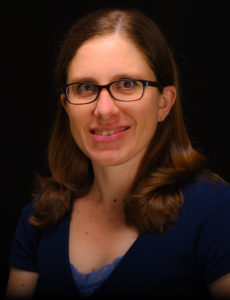
Justine García
September 4, 2019
Las Vegas, N.M. – New Mexico Highlands University biology professor Justine García will publish a research study that helps shed new light on how microbes, microscopic lifeforms, and the organisms they live in can help each other grow.
García is the lead author of the paper in “Ecology and Evolution.”
“In this study, we wanted to see where the microbes grew best,” García said. “We looked at two different beneficial microbes that both live in the host, an amoeba. We found that one microbe grows better with the amoeba and one grows better with the soil.”
García said the study was an important avenue of research as many of the microbes that are beneficial to humans and crops are also transmitted from environment to host. In addition, predicting where microbes thrive is important to understanding which ones will benefit a host.
“For example, when human babies are born, they don’t have many microbes, but they immediately start acquiring microbes from environmental sources such as breast milk and other family members. The kinds of microbes babies start acquiring make a big difference in their long-term health, from being prone to allergies to obesity,” García said.
García is a microbiologist whose primary research focus is how hosts and microbes form relationships that can be beneficial for both of them.
“Microbiology is important because microbes are responsible for our health and the health of the environment. Microbes provide unique services. For example, humans need microbes in their gut to break down cell walls in plants in order to extract the nutrients,” García said.
García joined the Highlands University faculty fall semester 2019. She completed her Ph.D. in 2015 from Emory University in Atlanta, Georgia, in population biology, ecology and evolution. She was a postdoctoral research associate at Washington University in St. Louis from 2015 to 2019.
Previously, García taught at Bard College in Annandale-on-Hudson, New York, from 2016 to 2017.
“I learned how to connect with students, including making science applicable to daily life,” García said.
At Highlands, García teaches courses such as Principles of Biology: Cellular and Molecular and general microbiology.
“I want students to learn the content as well as how to critically evaluate scientific evidence. Throughout life, individuals make health decisions. It’s empowering to be able to evaluate these decisions based upon scientific understanding,” García said.
García’s previous research is published in scholarly publications such as “Frontiers in Microbiology,” “Molecular Ecology,” “Evolution” and “Applied and Environmental Microbiology.”
“Research is compelling and exciting because you get to discover new knowledge to answer bigger questions. There’s also the duality of constant challenge because there’s so much uncertainty,” García said.
García, a native of Los Lunas, New Mexico, said it’s a pleasure to be back in her home state.
“I’m enjoying being close to family, the delicious food and the fantastic weather in New Mexico,” García said.

